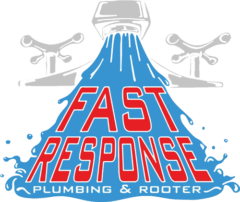Understanding Drain Clogs
Clogged drains are a common household issue that can occur in various areas such as bathroom sinks, showers, and the kitchen sink drain. These clogs usually happen because of hair, soap, grease, or food particles that get stuck in the drain pipes.
In the bathroom, hair is often the main culprit. It collects with soap residue and forms stubborn clogs. We can prevent some of these by using a drain cover to catch hair before it goes down.
For kitchen sink drains, food scraps and grease are usual causes. It’s important that we avoid washing large food particles down the sink. Using strainers can help keep larger bits of food out of the pipes.
Sometimes clogs are deep within the drain pipes. This can make them harder for us to reach. A plunger or homemade cleaning solution often does the trick, clearing minor blockages.
DIY Tip: Mixing baking soda with vinegar is a natural way to tackle clogs. Pour the mixture down the drain and let it fizz for a few minutes before flushing with hot water.
If clogs persist, it might be a sign of bigger problems in our plumbing. In these cases, it’s wise to consider seeking help from a professional plumber.
Preventative Maintenance for Drains

Keeping our drains in good shape prevents future clogs and damage. Two methods to maintain clear drains are regular flushing and using baking soda as a natural cleaner. These steps help ensure our drains function properly.
Regular Flushing and Cleaning Practices
Regularly flushing our drains with hot water can help clear minor debris build-up. We recommend pouring a full kettle of hot water down each drain once a week. This simple practice keeps oils and grease from sticking to pipes, reducing blockage risks.
Another effective habit is using vinegar and baking soda once a month. First, pour about half a cup of baking soda down the drain. Then, add a cup of vinegar and cover the drain. Let it bubble for a few minutes and finish by flushing with hot water. This method helps keep drains fresh and clean, removing minor build-up.
Natural Drain Maintenance with Baking Soda
Incorporating baking soda into our routine helps maintain drains naturally. We start by using baking soda along with vinegar. This combination is effective and eco-friendly, breaking down grime and odors.
If regular cleaning with baking soda proves effective, we may rarely experience blockages. It’s cost-effective, too. By using these natural products, we reduce the reliance on harsh chemicals that may harm both pipes and the environment. Keeping these practices regular ensures clean and clear drains with minimal effort.
DIY Unclogging Techniques

Unclogging drains at home can be simple. We can use basic items like boiling water, a mix of baking soda and vinegar, or a drain snake to clear the blockages.
Boiling Water Method
This method is quick and uses something we all have: boiling water.
First, we boil a pot of water. Once ready, we slowly pour it down the drain in two or three stages. This helps to melt away fatty and greasy buildup. It’s essential to wait a few seconds between each pour to let the hot water work its way down.
For metal pipes, this method is ideal, but if our pipes are plastic, we need to make sure the water is hot but not boiling. This prevents potential damage to the pipes.
Baking Soda and Vinegar Solution
The baking soda and vinegar solution is another simple method.
First, we need to pour about half a cup of baking soda into the drain. Next, we add a full cup of white vinegar. The mixture will fizz, helping to break down the blockage.
Let the solution sit for about 15 minutes. Then, we flush the drain with hot water to clear out loose debris. This method is effective on minor clogs caused by organic materials.
It’s safe for all types of pipes, making it our go-to for regular maintenance.
Using a Drain Snake
For tougher clogs, using a drain snake might be necessary.
A drain snake is a flexible tool that reaches deep into pipes. We insert it into the drain and slowly rotate it. As we maneuver the snake, it hooks onto or breaks apart the blockage.
Once we feel resistance, we gently twist and pull the snake back. This usually removes the clog. After using the snake, it helps to run hot water to wash away any remaining debris.
This technique works well with hair and other solid materials blocking the pipes. It’s one of the most effective ways to clear difficult clogs.
When to Call a Professional
Sometimes our efforts to unclog a drain just aren’t enough. Knowing when to reach out to a professional plumber can save us time and effort. Here, we explore key factors like clog severity and the benefits of expert help.
Assessing Drain Clog Severity
Determining the severity of a clog is essential before seeking help. If water backs up in several fixtures or drains slowly despite our efforts, it’s time to consider professional aid. Multiple slow drains can indicate a bigger problem in the main sewer line.
We should also be on alert if we hear gurgling sounds, which might point to a serious blockage or venting issue. Strong, unpleasant odors coming from drains are often signs of a deeper, persistent clog. These situations can often require specialized tools and expertise.
Advantages of Hiring a Professional Plumber
Hiring a professional plumber has several advantages. They have the right tools and experience to handle even the toughest clogs efficiently. This can reduce the chances of further damage to our plumbing systems.
Professional plumbers often use advanced techniques like drain cameras to diagnose problems accurately. This can help locate issues that we might miss. By hiring experts, we ensure the problem is resolved quickly and safely, saving us from potential headaches and costly repairs.
